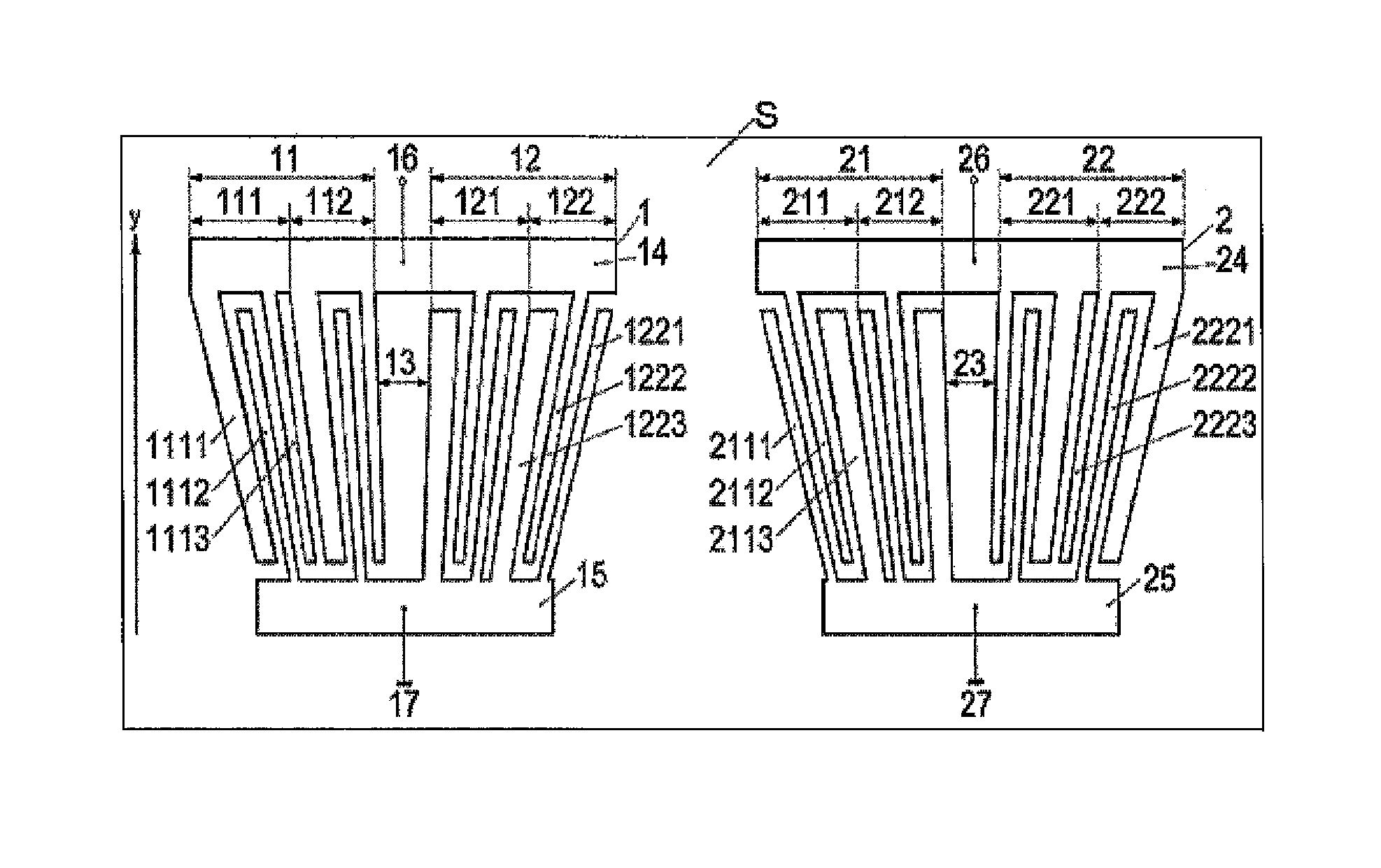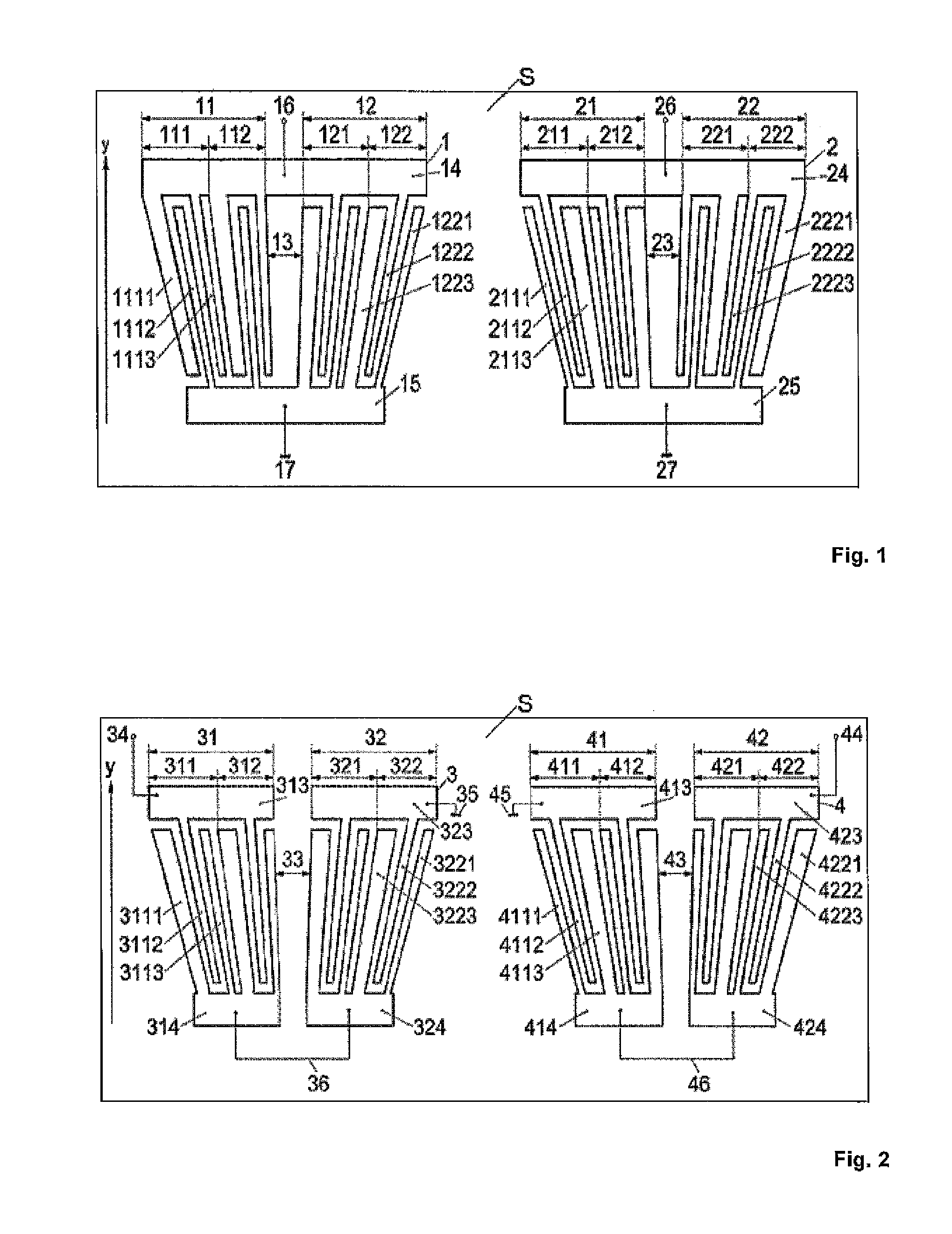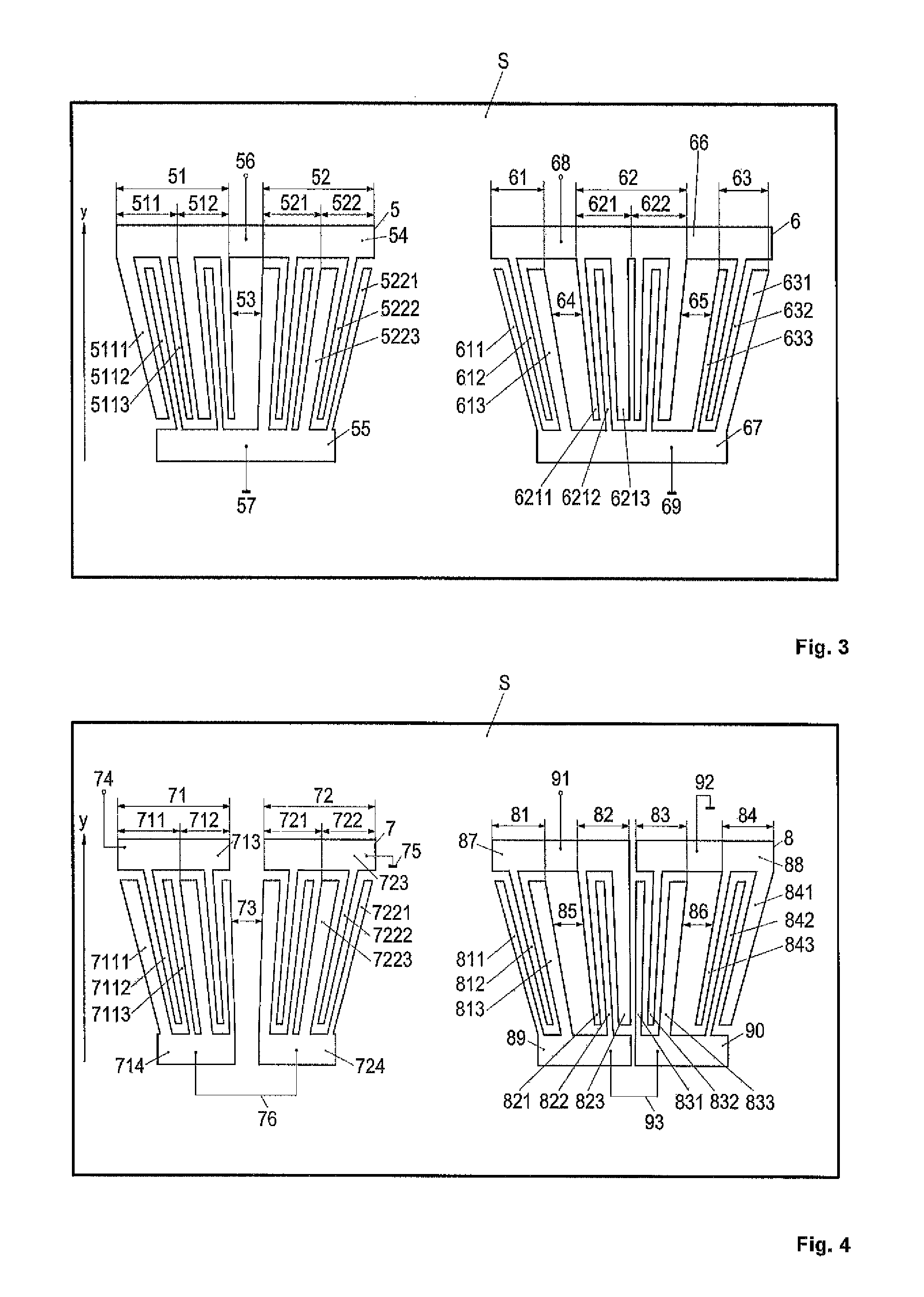Surface acoustic wave component
a surface acoustic wave and component technology, applied in the field of electric technology/electronics, can solve the problems of reducing the advantage of reducing losses by means of the use of unidirectional transducer cells, not only the basic frequency, and affecting the performance of the acoustic wave component,
- Summary
- Abstract
- Description
- Claims
- Application Information
AI Technical Summary
Benefits of technology
Problems solved by technology
Method used
Image
Examples
example 1
[0044]This exemplary embodiment relates to FIG. 1 and shows a surface acoustic wave component in which two fan-shaped interdigital transducers 1 and 2 are disposed on a piezoelectric substrate S.
[0045]In this connection, the fan-shaped interdigital transducer 1 is composed of the partial transducers 11 and 12, which are switched in parallel and which in turn are composed of the cells 111 and 112 or of the cells 121 and 122, respectively.
[0046]The partial transducers 11 and 12 shown each contain only two cells, while in practical use, partial transducers generally consist of significantly more cells. The cell type is DART (Distributed Acoustic Reflection Transducer). Its length amounts to a synchronous wavelength that corresponds to the quotient of the phase velocity of the surface acoustic wave and of the center frequency of the component. A DART cell consists of a prong having a width of % of the cell length, referred to as representative for the cells of the partial transducer 11 ...
example 2
[0059]This exemplary embodiment relates to FIG. 2 and shows a surface acoustic wave component in which two fan-shaped interdigital transducers 3 and 4 are disposed on a piezoelectric substrate S.
[0060]In this connection, the fan-shaped interdigital transducer 3 is composed of the partial transducers 31 and 32, which are switched in series and which in turn are composed of the cells 311 and 312 or of the cells 321 and 322, respectively.
[0061]The partial transducers shown each contain only two cells, while in practical use, partial transducers generally consist of significantly more cells. Here, too, the cell type is DART. Its length amounts to a synchronous wavelength that corresponds to the quotient of the phase velocity of the surface acoustic wave and of the center frequency of the component. A DART cell consists of a prong having a width of ⅜ of the cell length, referred to as representative for the cells of the partial transducer 31 with 3111, and as representative for the cells...
example 3
[0074]This exemplary embodiment relates to FIG. 3 and shows a surface acoustic wave component in which two fan-shaped interdigital transducers 5 and 6 are disposed on a piezoelectric substrate S.
[0075]In this connection, the fan-shaped interdigital transducer 5 is composed of the partial transducers 51 and 52, which are switched in parallel and which in turn are composed of the cells 511 and 512 or of the cells 521 and 522, respectively.
[0076]The partial transducers 51 and 52 shown each contain only two cells, while in practical use, partial transducers generally consist of significantly more cells. The cell type is DART (Distributed Acoustic Reflection Transducer). Its length amounts to a synchronous wavelength that corresponds to the quotient of the phase velocity of the surface acoustic wave and of the center frequency of the component. A DART cell consists of a prong having a width of ⅜ of the cell length, referred to as representative for the cells of the partial transducer 51 ...
PUM
 Login to View More
Login to View More Abstract
Description
Claims
Application Information
 Login to View More
Login to View More - R&D
- Intellectual Property
- Life Sciences
- Materials
- Tech Scout
- Unparalleled Data Quality
- Higher Quality Content
- 60% Fewer Hallucinations
Browse by: Latest US Patents, China's latest patents, Technical Efficacy Thesaurus, Application Domain, Technology Topic, Popular Technical Reports.
© 2025 PatSnap. All rights reserved.Legal|Privacy policy|Modern Slavery Act Transparency Statement|Sitemap|About US| Contact US: help@patsnap.com



